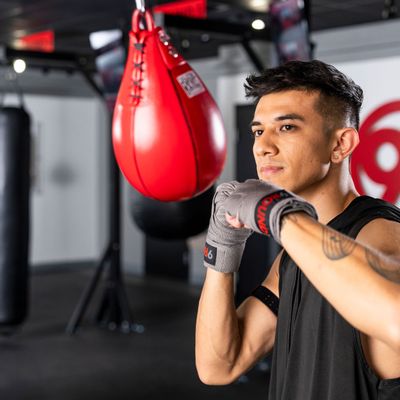What Muscles Do Planks Work?

While you may already know that planks are great for engaging your core during exercise, have you ever considered all the specific muscles you’re targeting with each plank? The answer might surprise you! Let’s dive deeper into how this popular exercise helps you build full-body strength.
A plank is one of the most effective bodyweight exercises you can do, which is why it’s one of our favorite moves to incorporate into your 9Round workouts, especially at Round 9. At first glance, a plank may seem incredibly simple, but anyone who’s attempted to hold a plank knows just how challenging this move can be.
HOW TO PERFORM A PLANK
To perform a simple low plank, start by lying face down on the ground. Lift your body onto your forearms, ensuring your elbows are positioned directly under your shoulders. Tuck your toes under and raise your body, maintaining a straight line all the way from your head to your heels.
As you hold a plank, you always want to keep your hips level—avoid lifting them too high or letting them sag too low—because maintaining proper alignment engages your core effectively and prevents strain on your lower back. This ensures you're maximizing the benefits of the plank while reducing the risk of injury.
Once you’re up off the ground, engage your stomach muscles to hold the position for 20 to 30 seconds while breathing steadily. You’ll feel the burn in your core within seconds of getting into a plank position.
If you can hold your plank longer, go for it—just be sure to maintain proper form as you challenge yourself. As with any exercise, quality is key, so focus on keeping your alignment strong as you extend your plank time.
Fun Fact: The world record for the longest plank was an incredible 9 hours, 38 minutes, and 47 seconds, set by Josef Šálek in Pilsen, Czechia, on May 20, 2023.
WHAT MUSCLES DO PLANKS TARGET?
A plank primarily works your core muscles, which are part of the main trunk of your body that helps stabilize your spine and pelvis.
There are multiple groups of muscles that are considered part of the core, but the key muscles activated by a plank are the transversus abdominis, rectus abdominis (this often referred to as your 6-pack), and oblique muscles.
But your core isn’t the only part of your body that’s engaged when doing a plank. Another key area of muscle affected is your upper body, including your deltoids (shoulders), lats, triceps, pectorals (chest muscles), biceps, and rhomboids (back muscles).
Your lower body also plays a crucial role in helping you maintain proper alignment during a plank. Engaging your legs muscles is essential for stability, as you tuck your pelvis to stabilize your lower back and align your midsection, you also activate your glutes.
Your quads and hamstrings also contribute to stability, while your calves and foot muscles provide additional support, helping you hold the plank effectively. So, as you can see, a plank is a full-body move with emphasis on your core muscles.
PLANK VARIATIONS
Once you’ve mastered your basic low or high plank—a high plank is the same as a low plank except you’re up on your hands rather than forearms (like you’re about to do a push-up)—you can dive into the many variations of a plank for a fun twist on your workouts.
At 9Round, we even celebrate an annual tradition every November called Planksgiving! During the week of Thanksgiving, we incorporate multiple plank variations into our workouts as active break exercises, including side planks, plank jacks, plank hip dips, mountain climbers, and more.
Plank variations are a great way to level up your workouts, challenging different muscle groups and increasing the intensity of this classic move.
By switching up your plank routine, you engage more than just your core—variations like side planks really activate your obliques, while plank jacks and mountain climbers boost your heart rate and further engage your shoulders, glutes, and legs.
These dynamic planks not only improve core strength but also enhance overall stability and endurance, making your workout more efficient and effective.
So, if you’re ready to start crushing your core, start adding more planks to your workout routine today. And if you're looking for a gym that keeps you motivated, check out your local 9Round studio for a full-body kickboxing workout that’ll keep you coming back for more!


